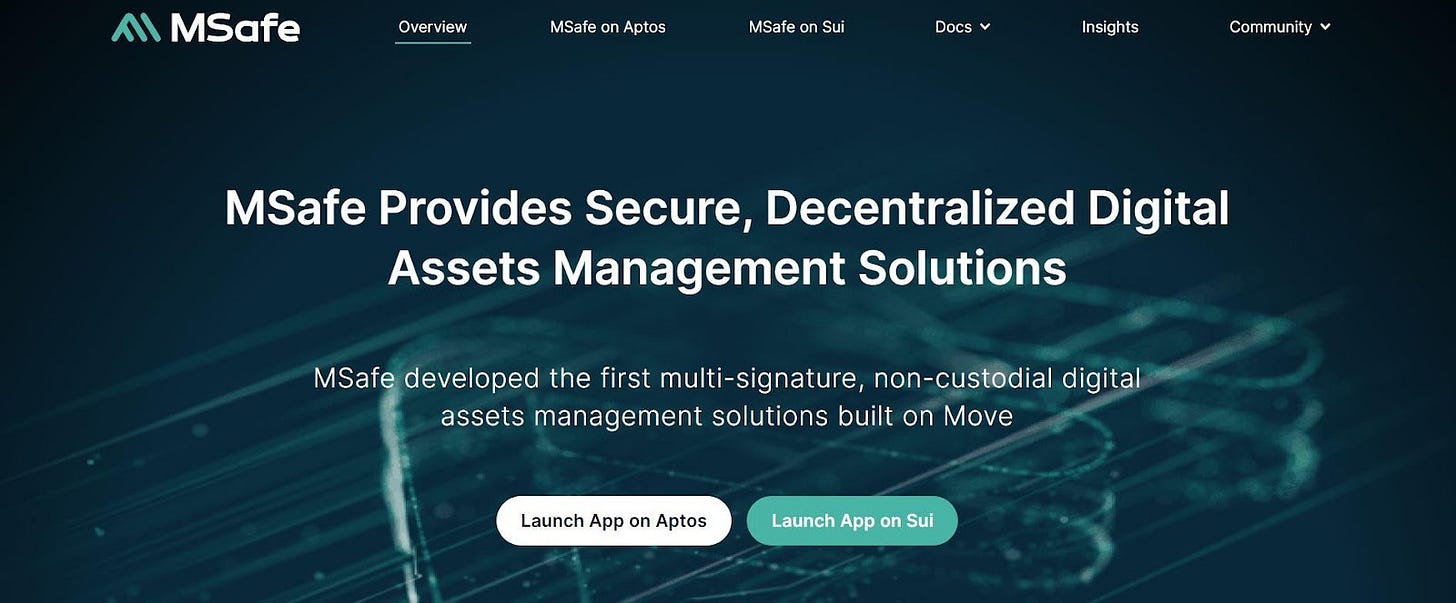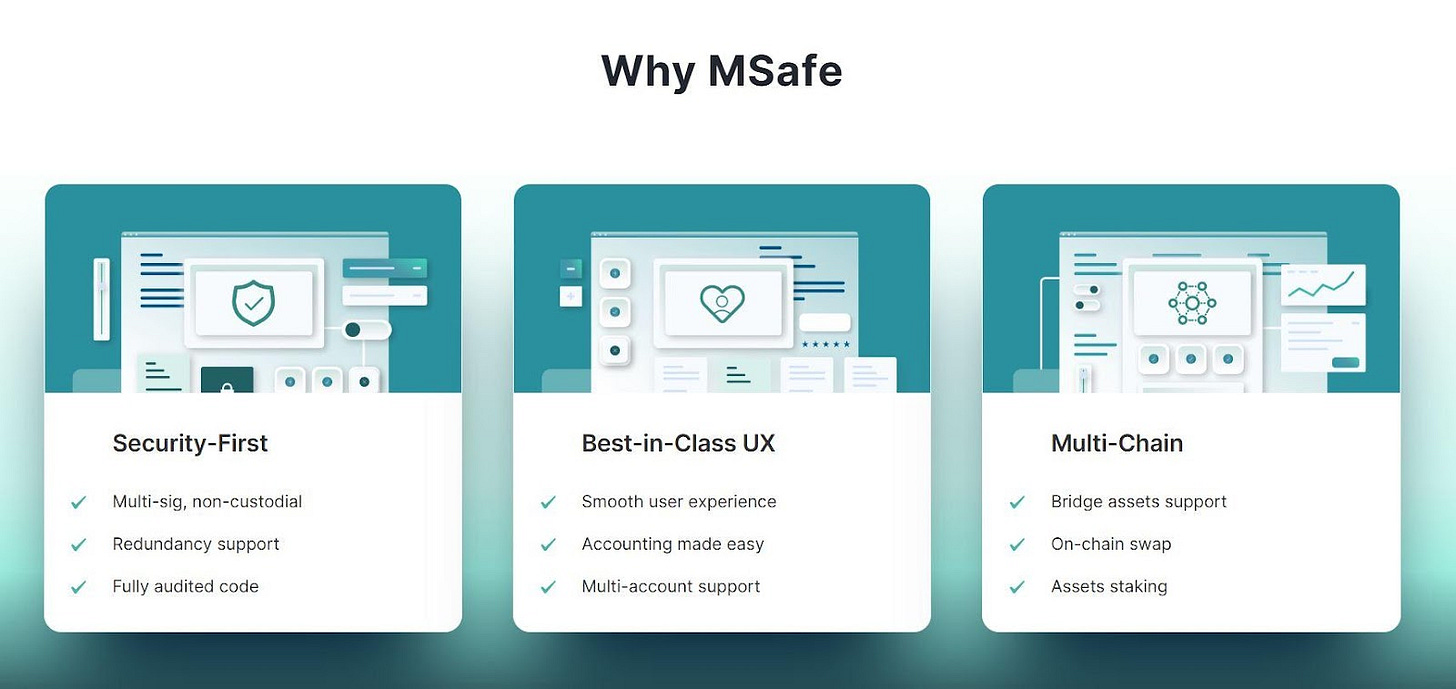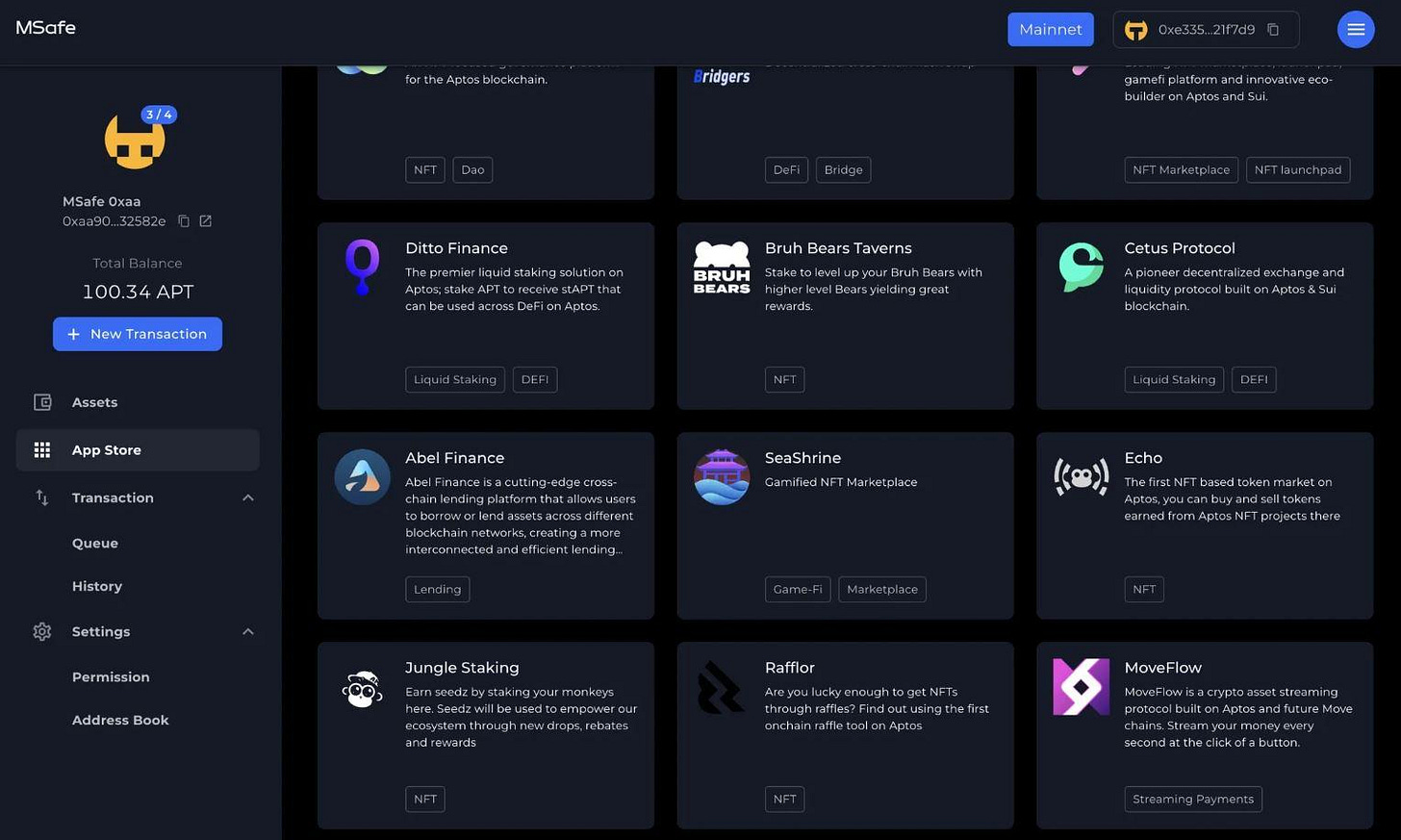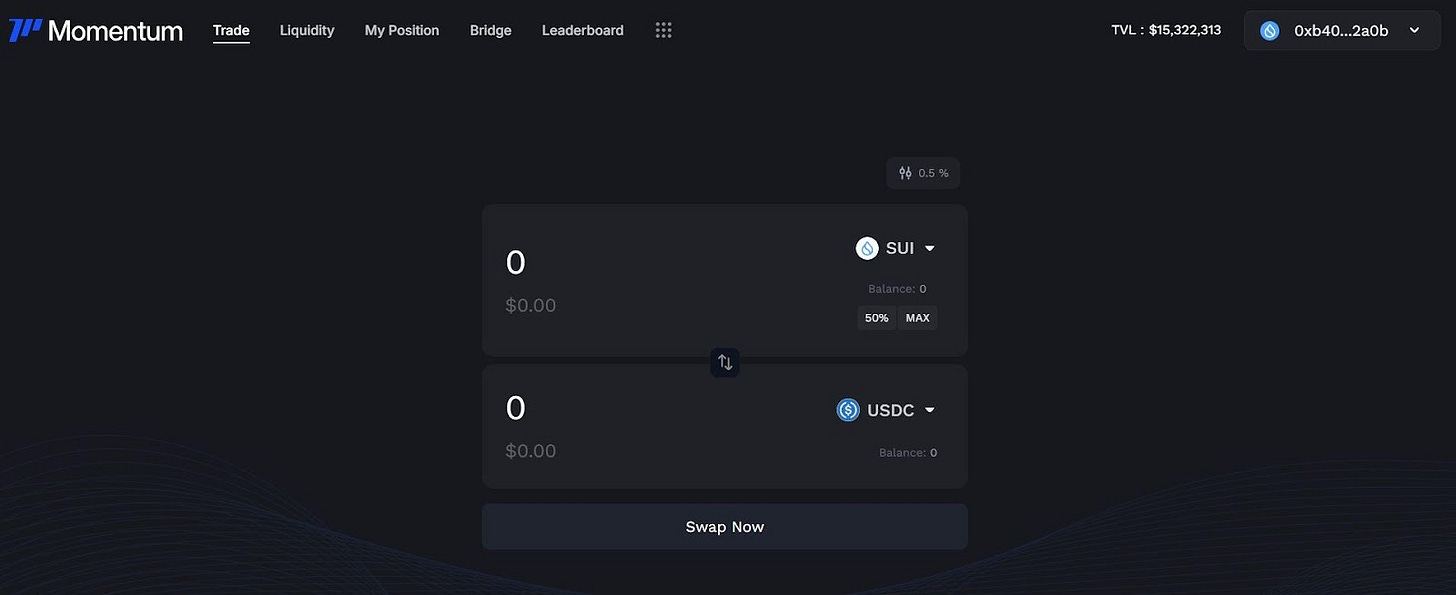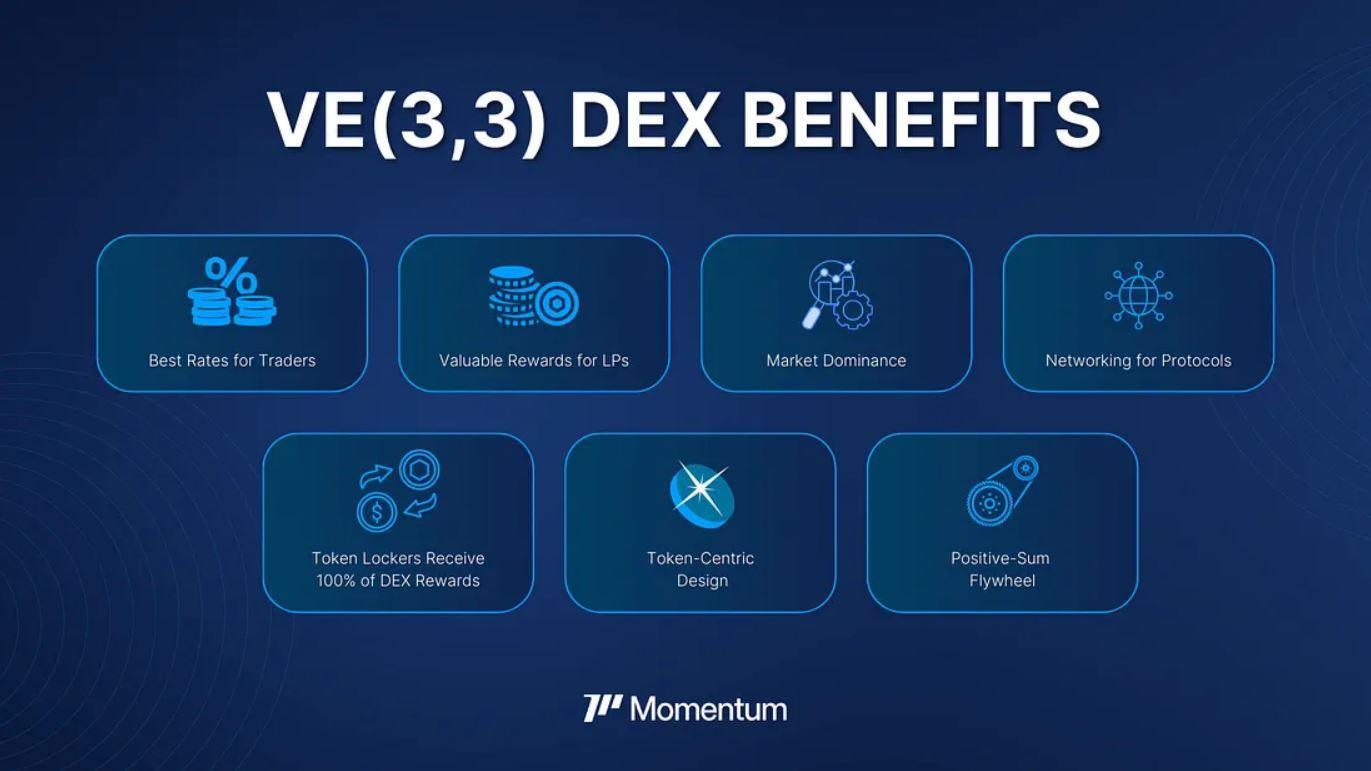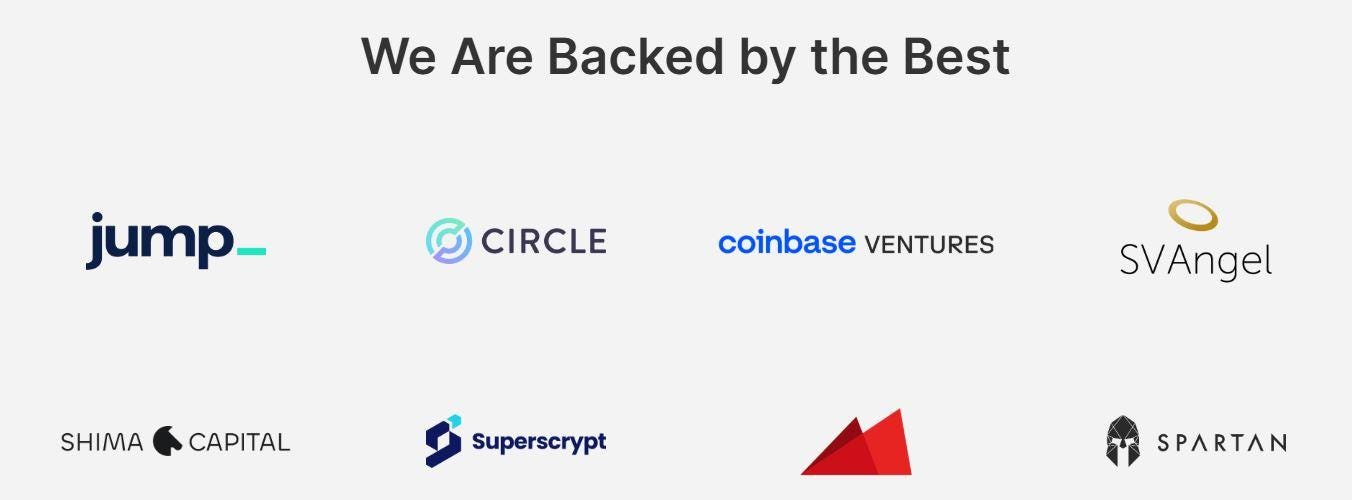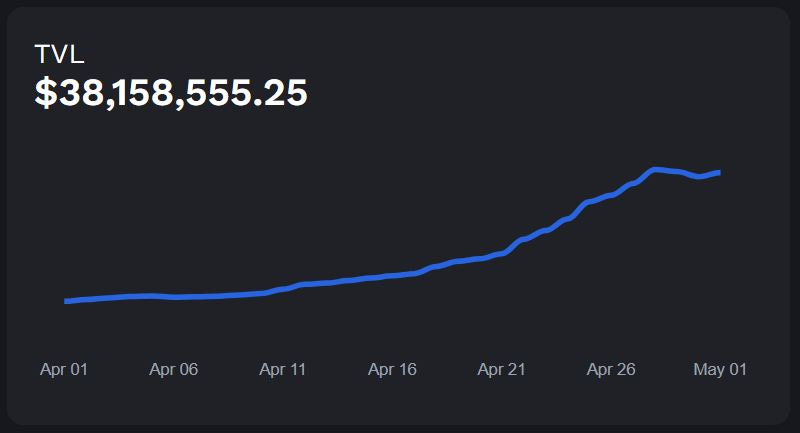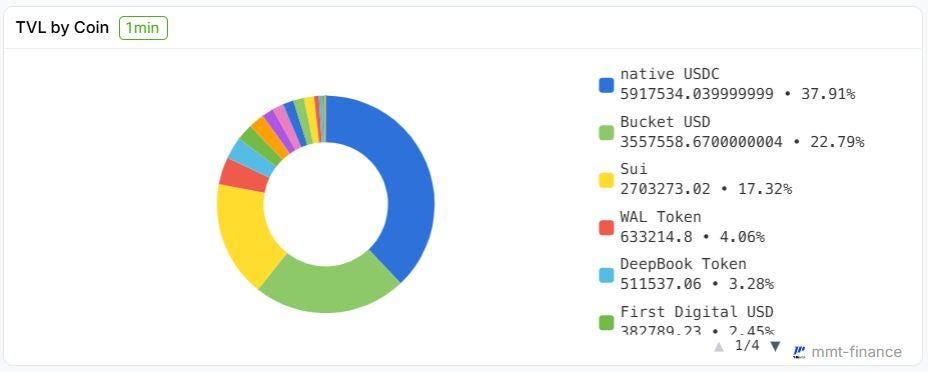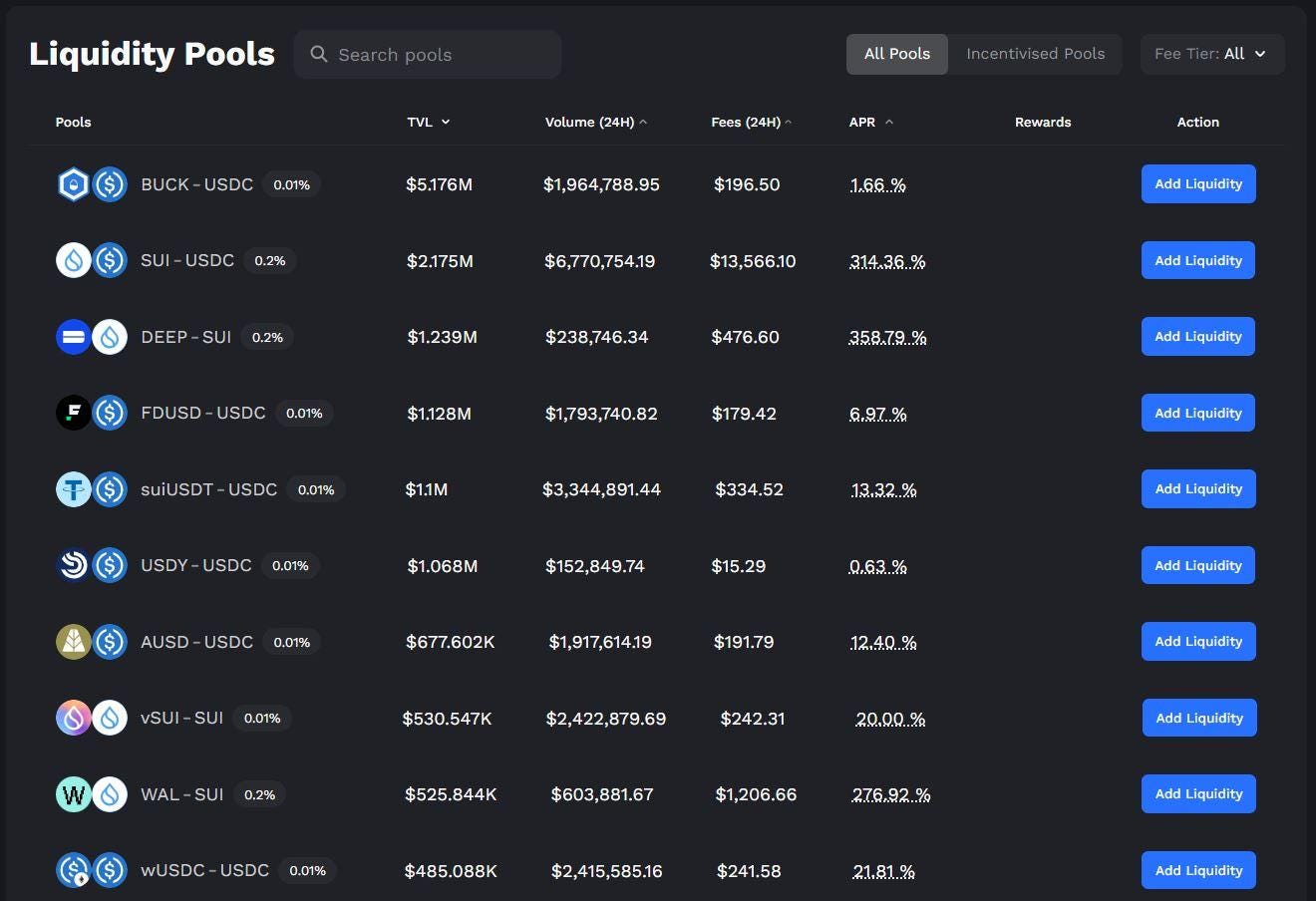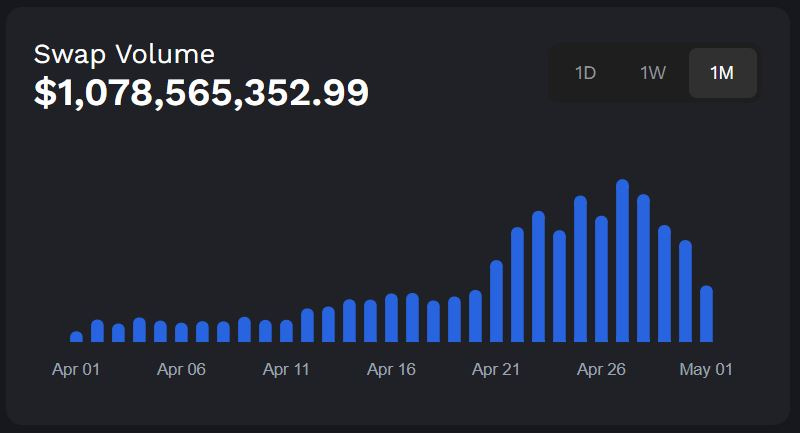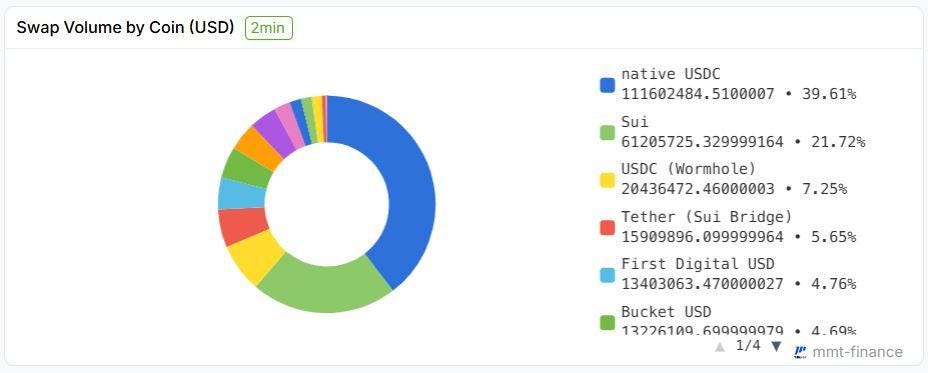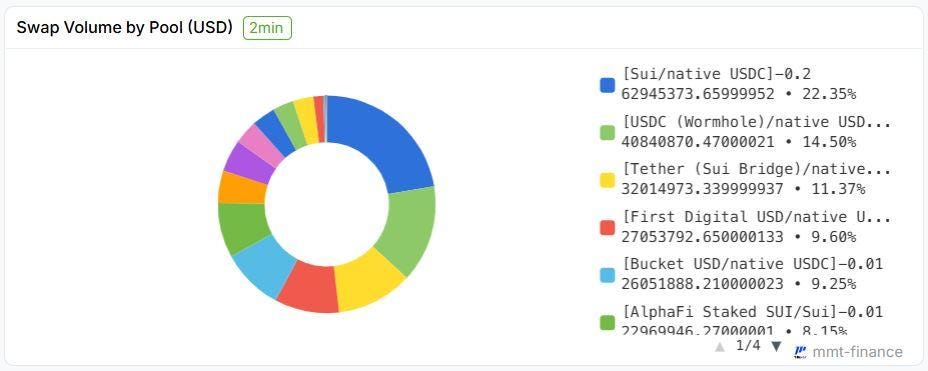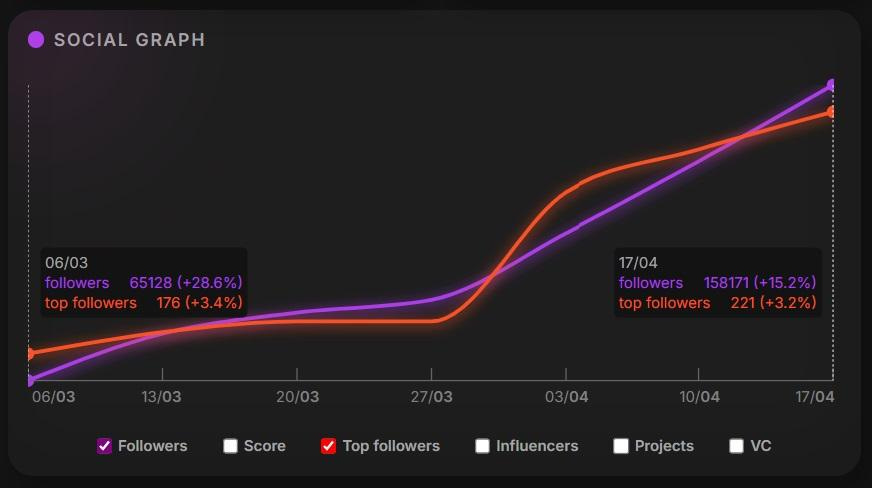Momentum Explained: A DeFi Protocol Where Everybody Wins
Disclaimer: The content presented in this article, along with others, is based on opinions developed by the analysts at Dewhales and does not constitute sponsored content. At Dewhales, we firmly adhere to a transparency-first philosophy, making our wallets openly available to the public through our website or DeBank, and our articles serve as vehicles for self-expression, education, and contribution to the ecosystem.
Dewhales Capital does not provide investment advisory services to the public. Any information should not be taken as investment, accounting, tax or legal advice or as a recommendation to purchase, sell or hold or to pursue any investment style or strategy. The accuracy and appropriateness of the information is not guaranteed by Dewhales Capital.
1. Overview
2. Architecture, components, and features
3. Team
4. Tokenomics
5. Partners and backers
6. Development, roadmap, and future steps
7. Potential competitors
8. Community
9. Final thoughts
10. References
1. Overview
Momentum (former MSafe) is a wallet-as-a-service provider in the Move-based ecosystem, offering infrastructure for DeFi, including multi-sig treasury management, token vesting, and liquidity provisioning.
Inspired by its counterpart on Ethereum, Gnosis Safe, the project was founded in August 2022 by experienced blockchain & digital asset wallet developers, with HQ in Silicon Valley.
As the first multi-signature, non-custodial digital assets management solutions built on Aptos and Sui, Momentum enables users, institutional users in particular, to store, manage and transact with greater peace of mind. For example, Momentum notifies account co-managers to approve each transaction request. Each transaction will only start after the defined threshold is met.
Broad range of Web3 entities can take full advantage of Momentum treasury management:
DAOs: Enable true decentralized asset management by communities
Token management: Token vesting, validator rewards distribution in a true decentralized fashion
DeFi: Manage DeFi revenue with peace of mind
GameFi: Secure your team’s assets and rewards for your gaming community
NFT marketplaces: Avoid rug pulls with security-first digital assets management capabilities
Network validators: Access and manage validator rewards with confidence and flexibility
Moreover, the team is set to redefine the DeFi landscape with their newest product, the first Move-based DEX leveraging ve(3,3) model. In essence, the ve(3,3) model strives to create a DEX ecosystem where users earn 100% of the protocol revenues by leveraging the native token, which is required to participate in governance.
2. Architecture, components, and features
Today’s DeFi industry is not flawless as it encounters major problems like:
Institutional and large-scale LPs struggle with deploying and managing massive capital securely and compliantly.
Traditional DEX models reward only liquidity providers while neglecting token holders.
Existing protocols lack mechanisms that result in win-win games, i.e. simultaneously align the interests of liquidity providers, token holders, and traders. This could lead to less sustainable growth and participation from different users.
Momentum defines its mission to tackle the above-mentioned issues. Also known as Momentum Safe (MSafe), it’s a blockchain project focused on providing secure and decentralized crypto asset management solutions, specifically tailored for the Move programming ecosystems on platforms like Aptos and Sui.
The Move programming language is a smart contract language originally developed by Meta (formerly Facebook) for the Diem blockchain project (which was eventually discontinued). Even though Diem didn’t launch, Move found a new life in other blockchain ecosystems like Aptos and Sui.
Key Features of Move are:
Safe and verifiable: Move was designed with safety in mind, especially to prevent issues like double-spending or memory errors. It uses a strong static type system and formal verification tools.
Resource-oriented programming: One of the most unique features: resources are first-class types. You can define types that can’t be copied or accidentally destroyed, mimicking how actual assets (like tokens) work.
Custom assets: You can define custom tokens or assets (e.g. NFTs) directly in the language using resource types.
Modular & reusable: Move uses modules to encapsulate code and state, making smart contract logic reusable and easier to manage.
Momentum’s primary goal is to enhance security through features such as multi-signature support, non-custodial management, and fully audited code. Momentum aims for an optimal user experience, making digital asset management straightforward with features like multi-account support and easy accounting. Additionally, the platform supports cross-chain functionality, including asset bridging and staking, reflecting its ambition to cater to a DeFi audience across various blockchain networks.
Momentum wallet supports a wide range of functionalities for different types of users, such as:
1. For consumers:
Treasury management (hold/transfer crypto assets):
Fund management: Momentum wallet can be used to hold a fund that is created and managed by a set of stakeholders. Thus, all operations related to the wallet are executed by collecting enough signatures of the stakeholders, and the stakeholders are able to participate in fund management.
DAO treasury: Momentum wallet is also ideal for storing a DAO’s treasury that needs to be co-managed by selected DAO members. These selected DAO members are responsible for managing the DAO treasury according to DAO votes or DAO policies.
Project token management: When a project uses Momentum wallet to manage its token assets, core team members or even community leaders can decentralize the access permission of the project treasury and protocol. Projects can use Momentum wallet in multiple ways, such as:
1. Project token vesting and distribution (tokenomics management).
2. Fund management & project revenue.
3. Streaming payments sent to employees or partners.
dApp store integration (interact with other dAPPs such as staking, lending, yield farming (coming soon)): Momentum dApp Store allows users to interact with any third party dApp UI that has integrated with the Momentum wallet. Integrating a dApp with the Momentum dApp Store enables multiple approvals for a dApp function call. This brings composable security to the dApp.
2. For developers:
Smart contract deployment & update (deploy or upgrade a Move module): By leveraging Momentum’s full on-chain interoperability, developers can use Momentum wallet as the contract deployer or admin role to decentralize the ownership of the protocol.
Protocol admin control (call a move entry functions): Momentum wallet can be used to enable protocol administrative control functions, such as:
Protocol key parameter change
Emergency stop
Community reward change.
By using a multi-sig wallet like Momentum, admin control functions can be safely executed.
Integrate with Momentum dApp store
Add wallet to Momentum Web
It is worth mentioning that Aptos-based version of the Momentum wallet is audited by top security auditors OtterSec and Zellic. Also, auditors of the Sui version are OtterSec and MoveBit.
Another novel product released by Momentum is a DEX, which is built on the ve(3,3) model. The project’s DEX redistributes trading fees and voter incentives to token holders, and emissions to liquidity providers, aligning stakeholder interests.
3. Team
- ChefWEN, CEO and founder of Momentum, has a strong background in software engineering and computer engineering. Before founding Momentum in 2022, she worked at Facebook (including on Libra) for over six years, and previously interned at Amazon and Eaton. She holds advanced degrees from Georgia Tech and studied at UC Berkeley and Zhejiang University.
- Jacky (YanXiang) Wang is the CTO of Momentum, with deep expertise in blockchain infrastructure and distributed systems. He previously served as a core protocol engineer at Harmony. With strong technical skills in languages like Go, Python, and Solidity, he holds a M.Eng. from the University of Arizona and a B.Sc. in Physics from Fudan University. He's known for delivering complex solutions under tight deadlines.
- Vinson Leow is the CSO of Momentum, a seasoned Web3 growth strategist, entrepreneur, and angel investor. He has raised over $15M across 11 crowdfunding campaigns and served as a founder, advisor, or executive across various blockchain and tech startups. Based in Dubai, he also mentors at Techstars and co-founded ventures like CRT Labs and 3Suite. He holds a commerce degree from the University of New South Wales.
4. Tokenomics
Momentum leverages ve(3,3) model for its token, $MMT, a tokenomics model designed for DEXes, particularly to create a sustainable flywheel effect. In essence, the ve(3,3) model aims to create a DEX ecosystem where users are incentivized to hold tokens, participate in governance, and contribute to the protocol's success, while simultaneously protecting the value of the project's native token(s) from excessive inflation.
This design combines two concepts:
1. veToken model ("vote-escrowed"):
Introduced by Curve Finance.
Users lock their tokens (e.g., CRV) for a period (up to 4 years on Curve) to get veTokens (e.g., veCRV), which represent voting power and rewards.
The longer the lock, the more veTokens you get.
veTokens cannot be traded and decay over time unless re-locked.
This encourages long-term commitment and aligns governance with users who are deeply invested.
2. (3,3) Game theory:
From OlympusDAO, where:
(3,3) means everyone benefits most when all participants stake and cooperate.
(-3,-3) is the worst: if everyone sells, everyone loses.
It's a coordination game where users are incentivized to lock, not sell.
The ve(3,3) model was proposed by Andre Cronje (of Yearn and Fantom) for Solidly, a DEX on Sonic (former Fantom), combining the above ideas.
Key mechanics of this model include:
Vote-escrowed tokenomics (veTokens):
Users lock the DEX’s governance token (like $Solid) to get veSolid.
veToken holders vote on liquidity gauges to decide which pools get emissions.
Pools with more votes get more rewards.
Bribing system:
Other protocols bribe veToken holders to vote for their pools.
Bribes are paid in tokens and go directly to veToken holders.
(3,3)-style coordination:
Encourages locking, not selling, and rewarding those who participate in governance.
Everyone wins when users lock tokens and vote wisely.
Auto-emission distribution:
Emissions don’t go to stakers, but to LPs based on veToken holder votes.
This avoids unnecessary inflation for passive holders.
This smart design will bring benefits like:
Long-term alignment of incentives,
Encourages ecosystem participation,
Traders experience lower fees and reduced slippage,
Makes governance valuable via bribes.
5. Partners and backers
Partners:
Momentum has formed deep collaboration with Sui, Aptos, Movement Network, IOTA, and their ecosystems. Moreover, it has strong ties with major liquidity providers, stablecoin issuers and exchanges. To name a few, here are some of the projects and companies which shook hands with Momentum:
Pyth Network, Fewcha Wallet, AptosNFT.market , Ottersec, Wormhole, Rise Wallet, Tsunami, ArgoUSD, Aries Markets, Petra Wallet, Thala Labs, LayerZero, Souffl3, Martian Wallet, Zellic, Bruhbears, Mover, Proton Sale, Chainbase, Pontem Network, Econia, Agora Finance, AlphaFi, Bluefin, Bucket Protocol, Cetus Protocol, First Digital, Navi Protocol, Ondo Finance, Scallop, SpringSui, Suilend, Turbos Finance, and Volo.
Backers:
Momentum has raised $10M in two fundraising events so far. The first round was at the pre-seed stage on 5 Jan. 2023. The latest was a $5M seed round on 31 Mar. 2025, with participation from big names like Dewhales Capital, Coinbase Ventures, Circle Ventures, Spartan, Aptos, Shima Capital, Jump Crypto, Redpoint, SVAngel, Superscrypt (founded by Temasek).
6. Development, roadmap, and future steps
According to the project’s resources, key milestones in Momentum’s journey are listed below:
Oct 2022:
M-Safe, the first multi-sig wallet on the Move ecosystem goes live
MSafe launch on Aptos mainnet
Nov 2022: Completion of security audits by Zellic and Ottersec.
Jan 2023:
MSafe closes $5M pre-seed funding
MSafe dApp Store launch on Aptos
April 2023: MSafe Jays NFT minting (project’s first NFT campaign)
May 2023: MSafe launch on Sui mainnet
Aug 2023:
MSafe 2.0 launch on Sui
MSafe 2.0 launch on Aptos
Jan 2024: Introduction of MPay, an asset streaming protocol that supports token vesting, payroll, and rewards distribution for DAOs and crypto-native businesses worldwide.
Feb 2025:
MSafe rebranded to Momentum Finance
Launching Momentum Mega Quest on Galxe
Momentum announces partnership with Alpha Fi, a yield aggregator on Sui
Mar 2025:
Momentum announces a $5M fundraising at seed round with participation from Dewhales Capital and other investors.
Momentum DEX (MMT Finance) goes live on Sui Network
Apr 2025:
Momentum partners with 7K, a leading liquidity hub on Sui Network
Momentum’s DEX crossed $200M in total swap volume
Announcing Momentum Building Program, where early users can earn rewards by depositing assets on Sui through Momentum, trading, and referring friends.
Now if we let numbers speak, it’s obvious that MMT Finance is witnessing notable growth in terms of no. of users, TVL, swap volume, etc. Here’s an overview of some key statistics:
As the team has stated, here’s how they are positioning Momentum in the rapidly-growing Web3 space:
“In the short term, we aim to enhance the security of the Move ecosystem by adding another layer of security to protect user wallet, assets, code and accounts and a secure infra to support legit business / projects / DAO run on MOVE.
In the long term, we are dedicated to reducing the barrier for web2 enterprise to get into web3 space. We are building not only a wallet that helps enterprises manage their assets but also a service that takes care of all financial services an enterprise needs such as accounting, recurring payments.”
7. Potential competitors
First and foremost, the direct competitor to Momentum is Cetus, a DEX on Sui Network. Momentum has an advantage over Cetus by providing about one-third of the total TVL through its multi-sig solution. This positions Momentum as a crucial player in the liquidity space on Sui. Momentum will also redirect the TVL to its DEX by incentivizing liquidity providers with higher APY, offering better returns. Additionally, the ve(3,3) model implemented by Momentum ensures better alignment between protocols, liquidity providers, and traders, creating a more sustainable and rewarding liquidity environment. This setup could attract liquidity away from Cetus and into Momentum’s DEX.
Indirect rivals for Momentum include ve(3,3)-based DEXes like Aerodrome (Base Network) and Curve Finance (Ethereum Network), and also solutions like Gnosis Safe (Ethereum Network), which offer secure asset management but lack integrated liquidity and investment functionalities.
8. Community
With roughly 161k members on X and 150k on Discord, Momentum has a potential competitive advantage which, if used wisely, could boost the project’s success and value generation. As shown below, the number of the followers of Momentum’s X profile has become more than 2x, which is a very positive sign, signaling growing support from the Web3 community. Another good news is that this trend is accompanied by growth in the number of top followers (e.g. KOLs), a positive event that doesn’t happen frequently.
9. Final thoughts
Pros:
1. Momentum is headquartered in Silicon Valley, the beating heart of tech startups and businesses, where it can find and reach out to numerous top partners, investors, and of course talents.
2. The project is focused on institutional-grade users, so if everything goes well with the project, a huge amount of capital may flow into it.
3. The Move language brings some serious advantages to the table, especially when it comes to security, performance, and developer experience in the blockchain world. Here’s an overview of its main pros:
Strong safety guarantees
Formal verification
Custom asset support
Modularity & code reuse
Developer tooling & experience
4. Sui and Aptos are designed to take advantage of Move’s structure to enable parallel transaction execution, which means faster processing, lower latency, and high scalability.
Cons:
1. Like any emerging tech, the Move language comes with some drawbacks, especially depending on your background and what you're trying to build. These drawbacks include:
Less mature ecosystem (compared with likes of Solidity)
Limited platform support, as Move is not a general-purpose blockchain language, it’s specific to chains like Aptos and Sui.
Learning curve can be a hurdle for some devs.
Tooling is still evolving
Smaller talent pool
2. More focus on institutions potentially leads to more regulatory obligations and limitations, which not everyone likes.
3. To boost the project’s success as much as possible, it’s better for the Momentum’s marketing team to double their efforts, for example by publishing more blog posts, launching more competitions and campaigns, having more AMAs, etc.
10. References
https://www.m-safe.io/insights
https://www.linkedin.com/in/yanxiang-wang/
https://www.linkedin.com/in/vinsonleow/
https://www.linkedin.com/company/momentumfinance/
https://github.com/Momentum-Safe
https://app.tweetscout.io/search?q=https://x.com/mmtfinance
https://cryptorank.io/ico/momentum-finance#funding-rounds
Momentum links
Website | Docs |Twitter | Discord
Thanks for reading Dewhales Research! Subscribe for free to receive new posts and support our work.
We’d love to hear your thoughts on the article! Your feedback helps us improve and bring you the best content possible—it won’t take more than 2-4 minutes.
Also, this post is public, so feel free to share it!
Thank you so much! ❤️




